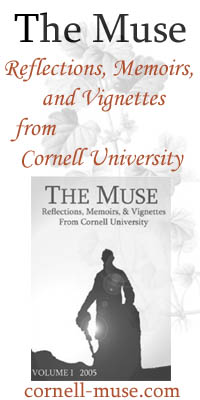Recent Donation Spurs Sub-Millimeter Science
The great recession has drastically altered the financial landscape of higher education. On the one hand, shrunken endowments, lower donation rates and cuts in state funding have led to shrunken and eliminated programs and spending cuts. But despite this, strategic investments by Cornell’s wealthiest alumni and record stimulus spending on basic research have let some departments continue to push ahead as leaders in their fields.
Certainly near the top of that small list of fortunate programs is Cornell’s astronomy department, placed in highest priority category by the College of Arts and Science’s strategic plan, and no-doubt benefiting from the Obama administration’s record spending levels on science research.
The department is known for playing key roles in high-profile projects like the Mars Rover, the Arecibo Observatory and the Spitzer Space telescope. Add to that list the Cerro Chajnantor Atacama Telescope (formerly the Cornell Caltech Atacama Telescope) --a 25-meter wide dish to be used for sub-millimeter astronomy, still in the design phase.
The project was already in a strong position, being led by two Astro powerhouses: Cornell and Caltech. Other Universities, including Colorado at Boulder, have since joined in the effort. Then, another shot in the arm came when astronomers met recently to decide which projects to put on the front burner in this coming decade. In the 2010 Decadal Survey by Nasa, the National Science Foundation and the Department of Energy (the three big sugar daddies of astronomy), CCAT was placed on a short list of high priority projects.
And now the latest development: an $11 Million donation from Fred Young '64, M.Eng. '66, MBA '66, CEO of Young Radiator Co.
The Science: Light is often best described as a wave moving through space. Like sound waves, it comes at many different frequencies (and thus many different wavelengths). We see waves with a wavelength of roughly half a micrometer, but physicists and astronomers work at many more very extreme wavelengths. Over the at the Cornell synchrotron, they’re using much smaller wavelengths (X-Rays) to look at indiviual atoms. While down in Peurto Rico at the Cornell-run Arecibo observatory they’re “seeing” radio waves (with wavelengths from a few centimeters to a full meter).
The Atacama telescope will represent a splendid medium between these two extremes: fractions of millimeters. This wavelength is useful to astronomers for many reasons. The structure of the large-scale universe is a cob-web like structure of dark matter, where gas moves along the web and collects, like dew-drops on a spider web, at the intersections of thin filaments. This condensing gas forms the swirling galaxies in which stars and planets reside. You can check out a great movie of this large scale structure here.The submillimeter wavelength allows scientists to study how early galaxy formation took place roughly a billion years after the big bang (that’s about 12 billion years ago). And CCAT will spot and study these galaxies faster and with greater precision than before possible, leading to better data on the overall story of our Universe’s evolution.
But the sub-millimeter wavelength is also useful for other purposes: enormous molecular clouds that eventually form stars and planets emit light in this wavelength, and CCAT will undoubtedly do a lot of work trying to better understand stellar evolution and planet formation. CCAT will also prove valuable in studying small Kuiper belt objects orbiting at the fringes of the solar system, leading to a better understanding of our own neighborhood.
The sub-millimeter wavelength is typically poorly suited for ground-based study: water vapor in the atmosphere absorbs the light, thwarting our best attempts to observe in this frequency band. Ordinarily, this could mean we shell out some extra cash and go to space, like the Hubble Telescope. But at these larger wavelengths, the telescopes need to be huge (CCAT will be closer in size and shape to Arecibo than to a typical optical telescope), and so an orbiting observatory is impossible.
That’s why they put the device in Chile. High up in the dry, barren Atacama desert, where the air is ultra-thin, the atmosphere is less of a problem. A professor working on the project mentioned off-hand that the air there is so thin, you can’t sleep at the project site.
Understanding dark energy, a topic absent from the Decadal Survey just ten short years ago, has become the highest priority in astronomy today. A host of new telescopes are in the works to study the problem, and CCAT’s excellent ability to contribute to knowledge of the early universe helps scientists construct the big picture of our universe’s evolution -- an evolution they believe is largely orchestrated by dark energy.


